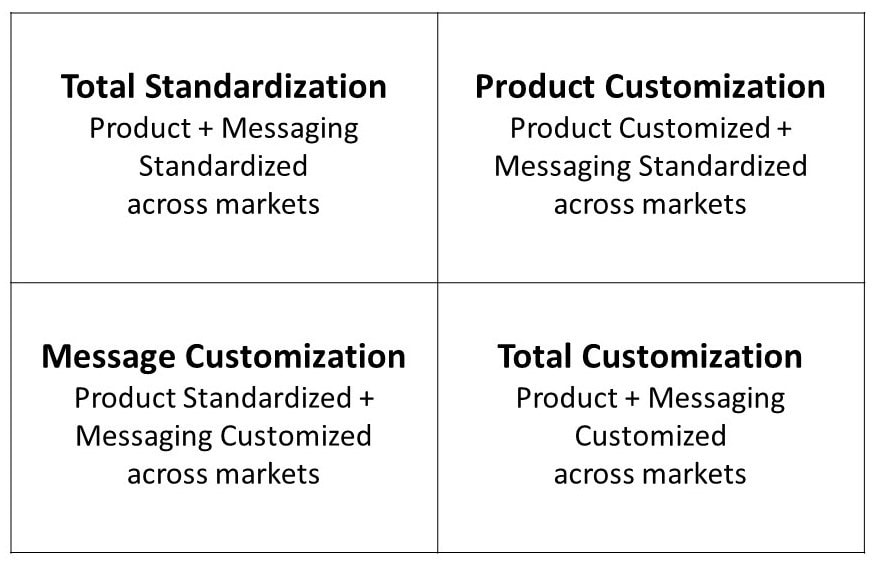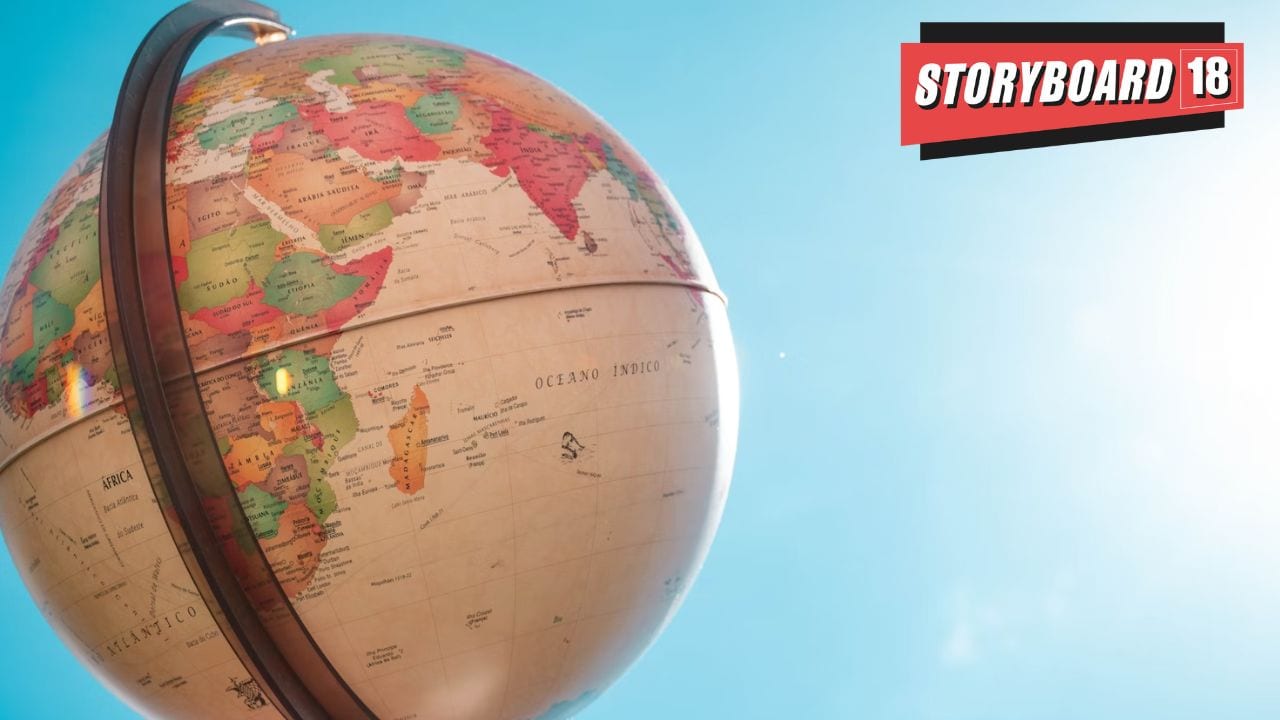Note to readers: Season-2 of our column Marketing Mocktail breaks down and explains the big ideas, new disruptions and old concepts and marketing practices that matter in the modern age.
One of the key decisions a global brand needs to make is what and how much to standardize and what and how much to customize, in the geographies that it is present in.
Product offering and brand messaging
The two most important aspects to consider in this context are: Product offering and brand messaging.
As depicted in the graphic below, there are four approaches that global brands can follow, and these are dependent on the interplay between the category and culture in the markets they serve.

Total Standardization – same product, same message
Generally, this approach is followed by brands in the luxury, technology, and automobile categories. They standardize all the elements of their product and messaging across the globe. Consumers aspire to these brands because of their global stature.
Apple markets the same products in terms of design and features (although it outsources the manufacturing to local markets). Its brand communication is also the same with respect to the message, tone, and style.
The luxury car brands like Mercedes Benz, Audi, and BMW also standardize their products and messaging across markets.
Product customization – different product, same message
McDonalds is a classic example. In India (and across markets), they have customized their menu to suit the local palette. The McAloo Tikki Burger is a derivative of the Aloo Tikki. They also don’t use beef and pork. In terms of the brand messaging though, McDonalds uses their global theme ‘I’m lovin’ it.’ with a local twist.
Most global food brands adapt their tastes and flavors within their global formats- Tandoori Chicken/Paneer Pizza from Dominoes or Masala Chai from Starbucks.
Some like Kellogg’s learnt it the hard way. When they introduced Cornflakes in India, it was a disaster because consumers kept adding hot milk (instead of cold milk) and that made the cornflakes soggy. Now, they have even started marketing Indian breakfast staples like Upama and Poha under the Kellogg’s brand.
HSBC’s campaign ‘The world’s local bank’ is an interesting one. The financial products offered by the bank vary, based on the financial regulations of each country. The bank wants to convey that while it provides global access and service standards to its customers, at the same time it is sensitive to local cultures and needs in its customer relationships.
Message customization – same product, different message
Here, brands don’t change the product, but adapt their messaging- the brand proposition and/or the creative expression.
Take the case of Coca Cola. The product is the same all over the world based on its patented formula. The brand message is localized from time to time. For example, when it wanted to increase penetration in the Indian market with a 10 Rupee price point, it was driven by the ‘Thanda Matlab Coca Cola’ campaign featuring Aamir Khan. The global brand campaign ‘Open Happiness’ was adapted to local cultural contexts, like bringing together Indian and Pakistani people.
Google also does India specific campaigns to promote its search engine. These campaigns leverage Indian cultural insights and emotions.
Total customization – different product, different message
Some global brands change both the product and communication for local markets.
Maggi instant noodles that sell around the world are as Indian as it gets. The Indian consumer does not even consider Maggi as a global brand. Its taste and flavors are tailored for India and so is its brand messaging. The masala flavor outsells every other flavor and campaigns like ‘Me and Meri Maggi’ make it one of the most loved brands among Indians.
In India, Cadbury’s Dairy Milk chocolate is having a sweeter taste, compared to its western counterparts, catering to the sweet tooth of Indians and ‘Kuch Meetha Ho Jaye’ is an India specific campaign. Dairy Milk’s strategy is to substitute ‘mithai’ with chocolate, across occasions.
Many India(s)- hyperlocal marketing
India being a diverse, multiethnic, and multicultural country presents an opportunity for even Indian brands to hyper localize their marketing.
Tata Tea, which started the hyper-local campaign strategy in 2019, offers tea with custom blends, packaging, and communication from eight different regions. The company recently launched Tata Tea Premium ‘Street Chais of India’ that has tea flavors inspired by the streets of India. Some of the offerings are Hyderabad Irani Chai, Mumbai Cutting Chai, Kolkata Street Chai, and Cream of Assam.
To quote a company source, “We are in a country which is very culturally and culinary diverse, and food and beverage preferences vary from region to region and district to district. In Tata Tea Premium, one of our strengths has been that we have blends that cater to regional preferences. It is our continued focus to drive the brand through hyper-local campaigns.”
So, how much do you standardize or customize as a brand is a context, culture, and category specific decision.
In most cases, it is about having a ‘Glocal’ perspective- think global, act local.
Anand Narasimha is a corporate turned academician with over three decades of experience spanning Brand Marketing, Advertising, Consulting, and Teaching. He writes the column Marketing Mocktail for Storyboard18. Views expressed are personal.
